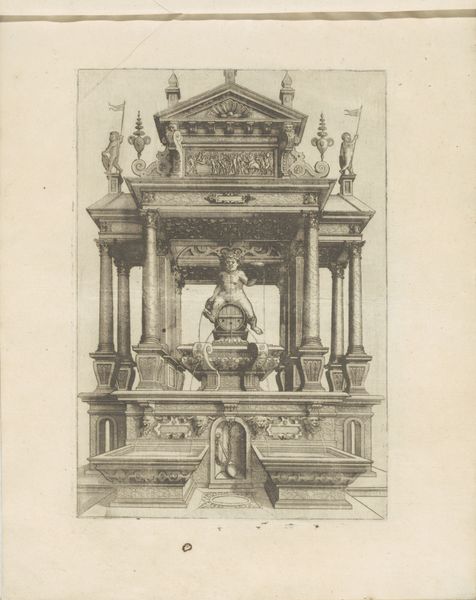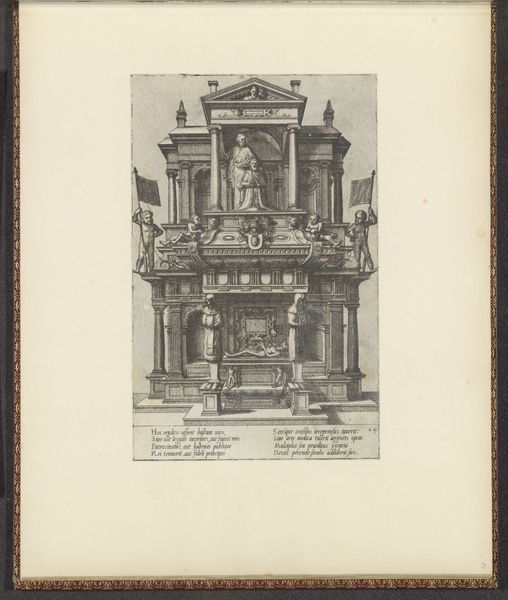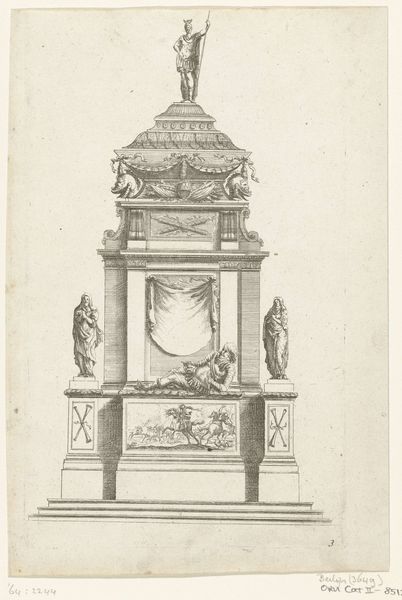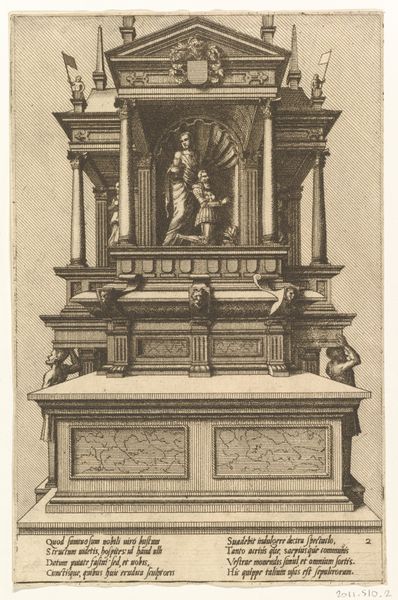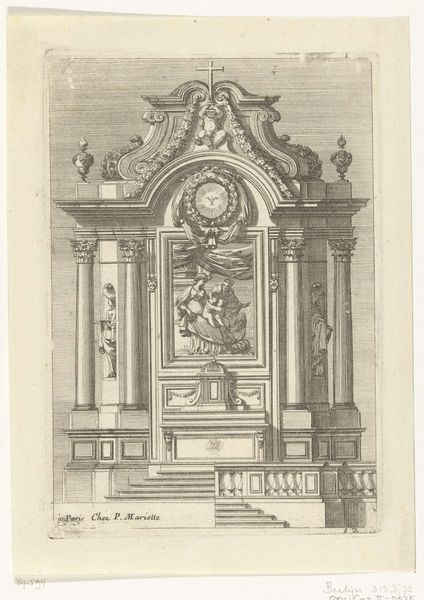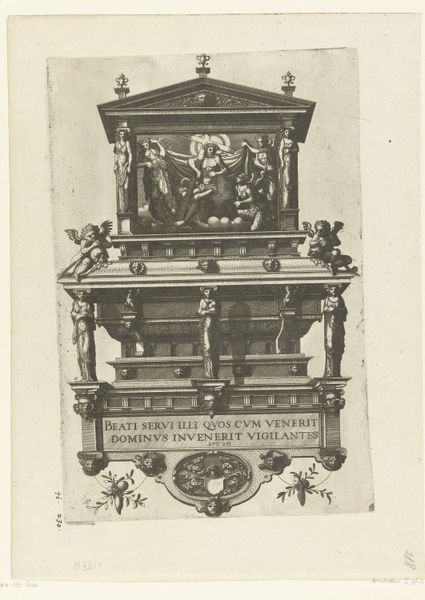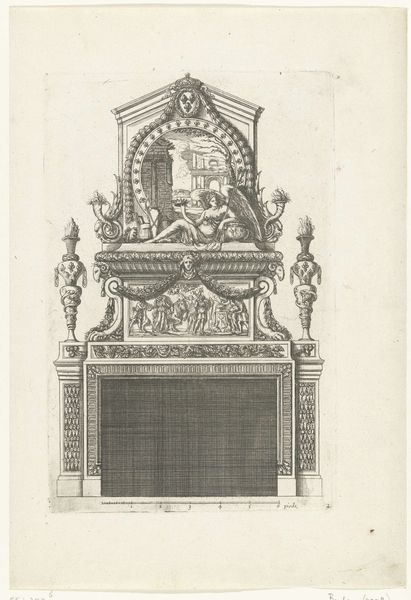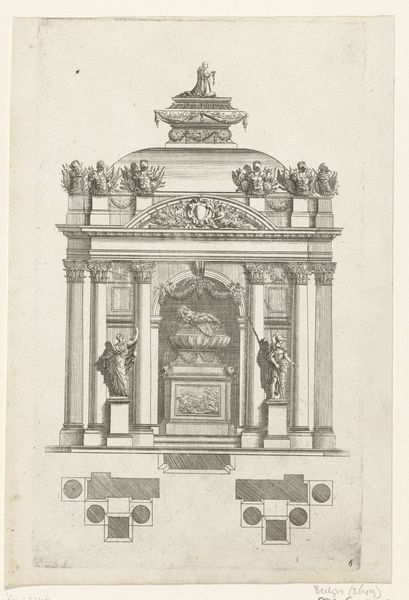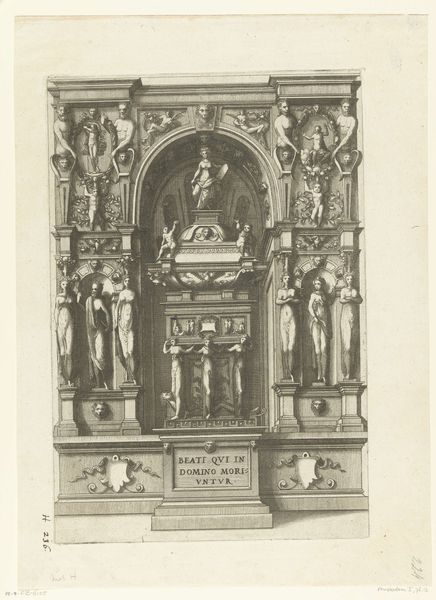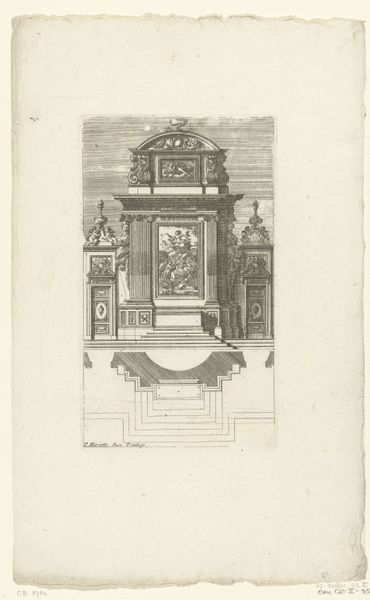
print, engraving, architecture
# print
#
form
#
11_renaissance
#
history-painting
#
northern-renaissance
#
engraving
#
architecture
Dimensions: height 225 mm, width 145 mm
Copyright: Rijks Museum: Open Domain
Curator: Looking at this print, I'm immediately struck by the somber tone, and the meticulous detail rendered in the engraving. Editor: We are looking at an engraving dating from 1563 entitled "Architectonisch grafmonument voor een edelman", which translates to "Architectural tomb for a nobleman." It’s attributed to Johannes or Lucas van Doetechum. Curator: The structure feels incredibly imposing. The artist used complex symbolism related to death and nobility in the Renaissance era. What stands out for you? Editor: Certainly the figure carved in the round near the top draws the eye. I believe this depicts Christ with a child. In funerary monuments this imagery typically represents the triumph over death and resurrection, giving hope for the deceased's soul, of course tied with status through the architecture. Curator: Interesting connection to power. It brings up the question of who gets remembered and how? The nobleman’s memorial is a curated image, an act of self-preservation but it begs to be placed in conversation with structures of privilege and cultural domination, especially since printmaking ensured broader distribution. What narratives were promoted by representing a powerful person's entombment with such permanence? Editor: Well, from the perspective of pure image analysis, the composition emphasizes stability. There's a clear hierarchy of elements that mirror established social orders; consider how the seraphim stand at each corner looking up at Christ in the monument’s apogee. Even the shields reinforce family identity. What stories are meant to be passed on visually? Curator: Perhaps stories legitimizing dominance. Think of the very medium itself. The rise of printmaking also coincided with, and bolstered, a time of religious and social upheaval. So how did disseminating these prints perpetuate or even subvert existing hierarchies? What kind of discourse did such a commemorative strategy stimulate amongst various social classes? Did it normalize noble power or possibly incite questions of inequality? Editor: It provokes ideas of visibility and enduring fame—both in its immediate society but extending far beyond, giving potency to its iconic strength across history. And consider, these engravers weren't passive conduits. They also subtly participated, choosing to give these concepts of immortality tangible form by virtue of the printing process itself. Curator: This piece really makes me reconsider memorialization. How different systems can work as extensions and mirrors of existing inequities, instead of working against such inequalities. Editor: Ultimately this print has reminded me of art's complex entanglement with power and ideology.
Comments
No comments
Be the first to comment and join the conversation on the ultimate creative platform.

